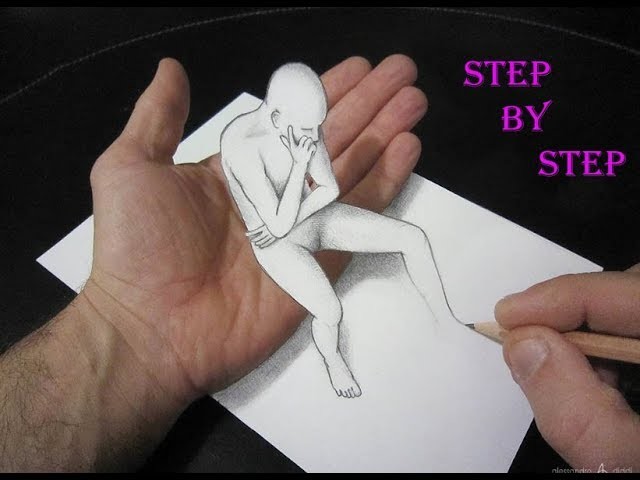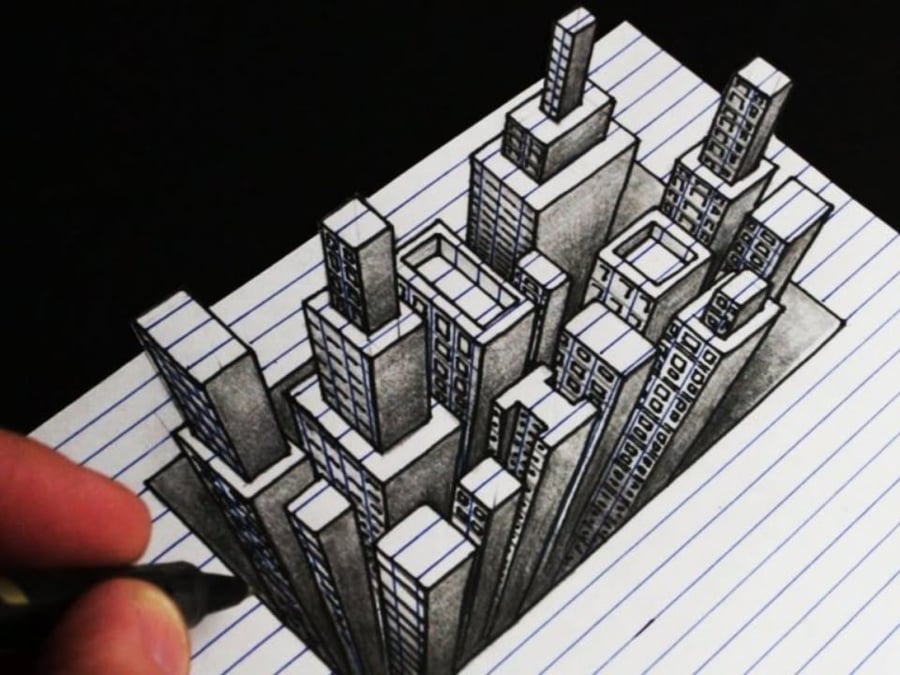
#3d drawing for beginners how to#
How to Shade a Cylinder Cylinder line drawing You can also make it’s edges more blurry the farther it moves from the object. Make the shadow darker towards (right underneath the sphere) and lighter as it moves away from it. You can also apply the first set in any direction you like with the second set on a slightly angle in relation to the first one. Unlike the sphere you can use straight crosshatch strokes for the shadow. Apply the second set on an angle to the first one. You can apply the first set in any random direction. When shading a sphere a good option may be to use lightly curved crosshatch strokes as the curves can help emphasize the spheres round shape. Similar to the previous example the shadow will be cast opposite the main light source (to the right and slightly behind the sphere). The darkest area is the point at which the curve of the sphere faces the farthest away from both the main light source and the reflection. It’s also important to note that the light area created by the reflection will not be as bright as the area lit by the main light source. The second transition will be due to the light reflecting from the surface it’s resting on. Shaded sphere drawingįor the “one light source” basic setup we are using the surface of sphere will gradually transition from it’s lightest point (top left in this case) to dark and then to light again. Start the drawing of the sphere by simply making a circle. How to Shade a Sphere Sphere line drawing You can also make the edges of the shadow more blurry the further away it is from the object. Make the shadow darker at the base (near the cube) and lighter as it moves away form it. Start by making strokes along it’s general direction and then add a second layer on a slight angle to the first one.

You can use a crosshatch for shading the shadow as well. The first set of strokes will help reinforce the shape of the cube while the other set will help blend the shading making it appear more natural.

For each side first make a set of strokes parallel to it’s perspective lines and afterwards apply another set of strokes at a different angle. Because the cube is white the shadow will also be significantly darker.įor the actual process of shading the cube you can use straight crosshatch strokes. As the main light source is fairly bright and high up above the cube it will create a well defined short shadow. In this example it will be to the right and slightly behind it. The cube will also cast a shadow directly opposite the light source. This is caused by the reflection of the main light source from the surface that the cube is sitting on. The gradients on the left and right sides of the cube are lighter towards the bottom and darker towards the top. In the above example the top side of the cube is the lightest and the right side the darkest. Another is that each side will also tend to have a light to dark gradient of its own. One is that generally cubes tend to have a light, medium, and a dark side.

Shaded cube drawingīefore applying the shading there are a few things you should be aware of. You can see the Perspective Drawing Tutorial for Beginners for an explanation on how to do this. Start by make a in perspective light line drawing of the cube. For example some may use simple one directional strokes while the method in this tutorial is to apply the strokes in such a way as to help emphasize the shape of the object. Shading Techniques and Stroke Types Drawing TutorialĪlso please be aware that different artists may prefer different shading methods. If you were to have one of these in front of you in a similar lighting setup then the light would be coming over your left shoulder.īefore getting started on this tutorial you may also want to learn about different types of shading strokes by looking at: All objects still have one main light source coming from the top left and slightly to the front of them. This is simply stated so that you know why some of the lighting is slightly different and has no real impact on the tutorial. As a result this also created some small variations in the lighting conditions between them due to the main light source (the sun) moving through out the day. Please note that in order to keep the tutorial accurate all of the examples were drawn from real life objects. Learning to correctly draw and shade basic three dimensional shapes is very important for beginner artists. Three dimensional shapes drawing examples These shapes can considered the “building blocks” for drawing more complex objects. This tutorial explains how to shade basic 3d shapes such as cubes, spheres, cylinders and cones.


 0 kommentar(er)
0 kommentar(er)
